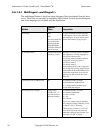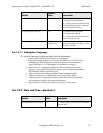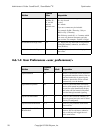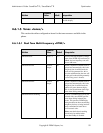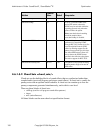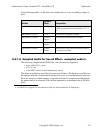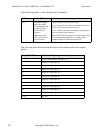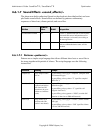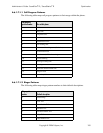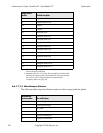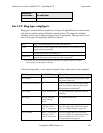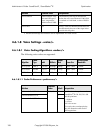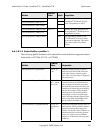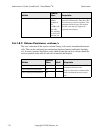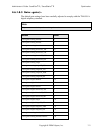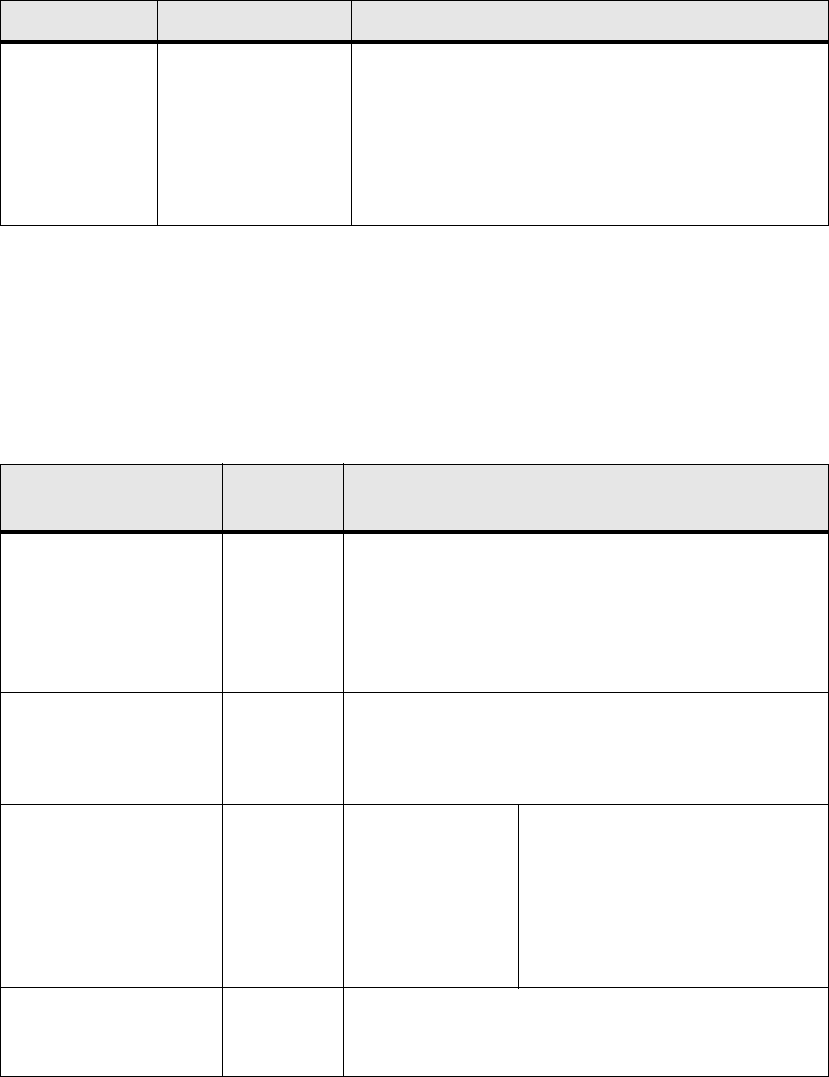
Administrator’s Guide - SoundPoint IP / SoundStation
®
IP Optimization
104 Copyright © 2006 Polycom, Inc.
In the following table, x is the pattern number, y is the instruction number. Both x and
y need to be sequential. There are three categories of sound effect patterns: callProg
(call progress patterns), ringer and misc (miscellaneous).
branch (n) Advance n instruc-
tions and execute
that instruction (n
must be negative and
must not branch
beyond the first
instruction)
se.pat.callProg.x.inst.y.type = “branch” (branch instruc-
tion type)
se.pat.callProg.x.inst.y.value = “-5” (step back 5 instruc-
tions and execute that instruction)
a. Currently, patterns that use the sampled instruction are limited to the following format:
sampled followed by optional silence and optional branch back to the beginning.
Attribute
Permitted
Values
Interpretation
se.pat.callProg.x.name UTF-8
encoded
string
Used for identification purposes in the user interface (cur-
rently used for ringer patterns only); for patterns that use
a sampled audio file which has been overridden by a
downloaded replacement, the se.pat.ringer.x.name
parameter will be overridden in the user interface by the
file names of the wave file.
se.pat.call-
Prog.x.inst.y.type
sampled
OR chord
OR silence
OR branch
As above.
se.pat.call-
Prog.x.inst.y.value
integer Instruction type:
sampled
chord
silence
branch
Interpretation:
sampled audio file number
chord set number
silence duration in ms
number of instructions to advance
se.pat.call-
Prog.x.inst.y.param
positive
integer
If instruction type is chord, this optional parameter speci-
fies the on duration to be used, overriding the on duration
specified in the chord-set definition.
Instruction Meaning Example



